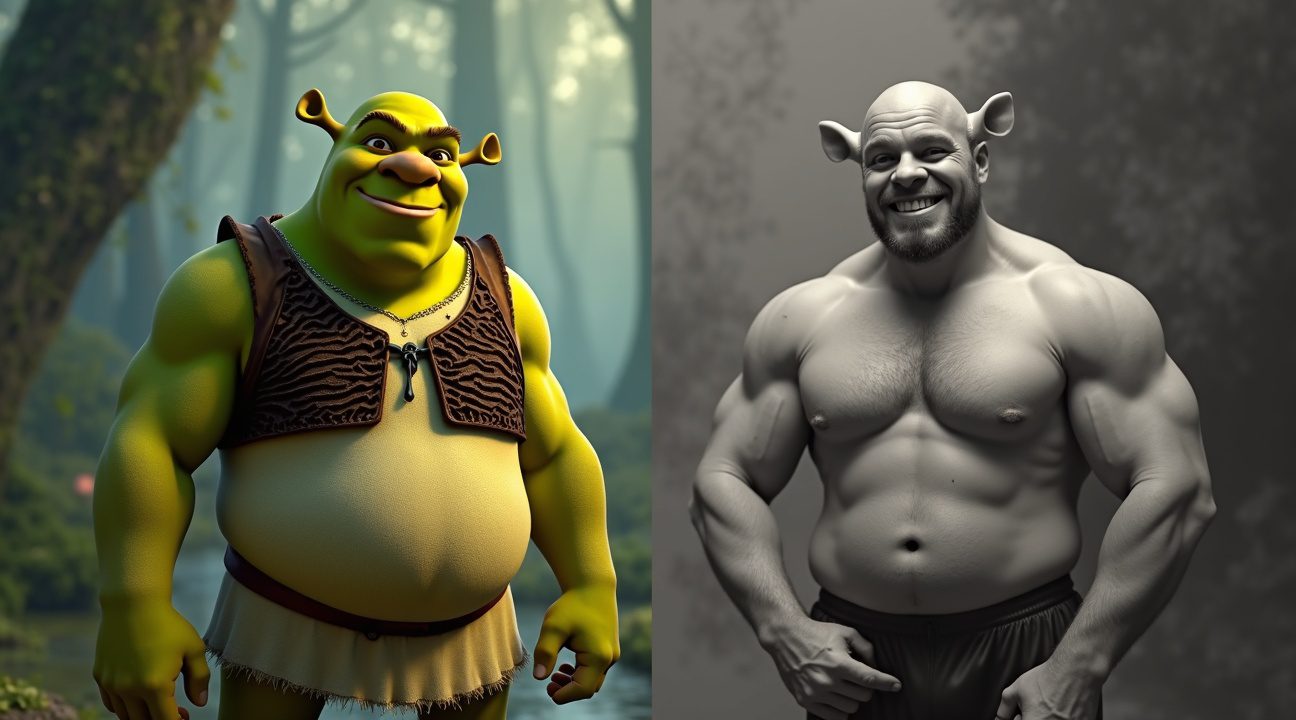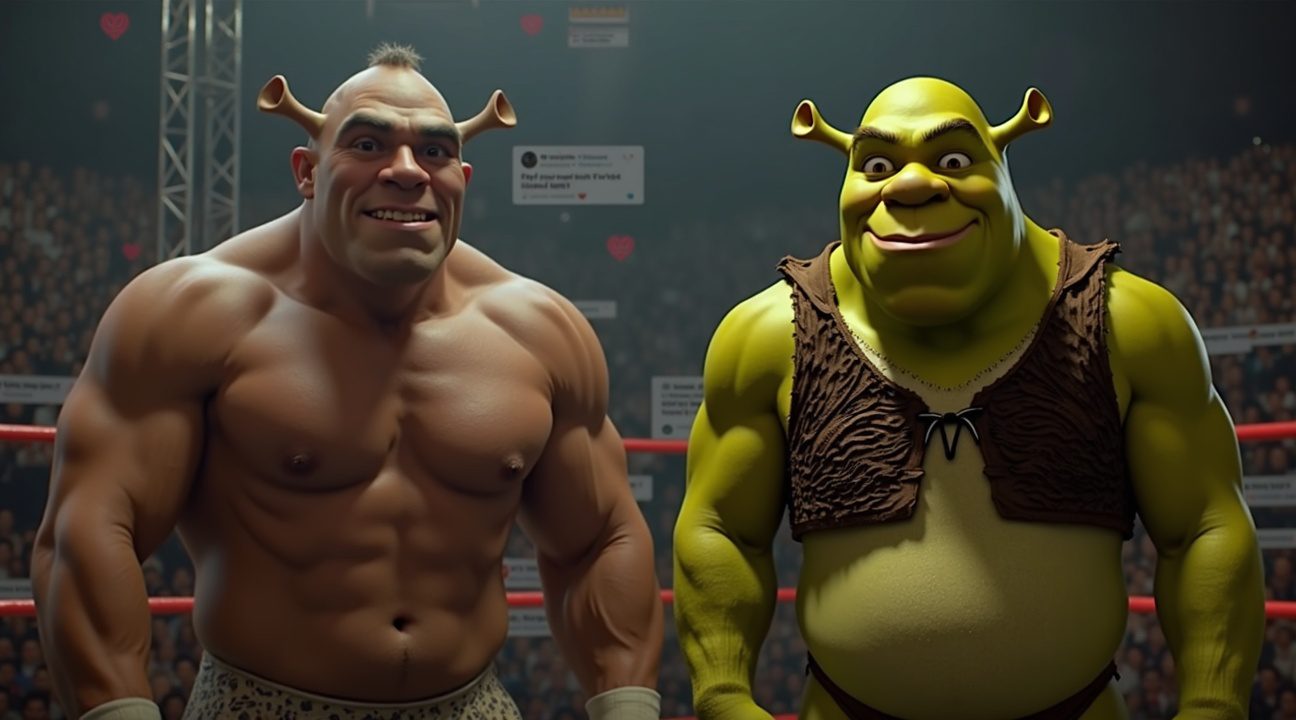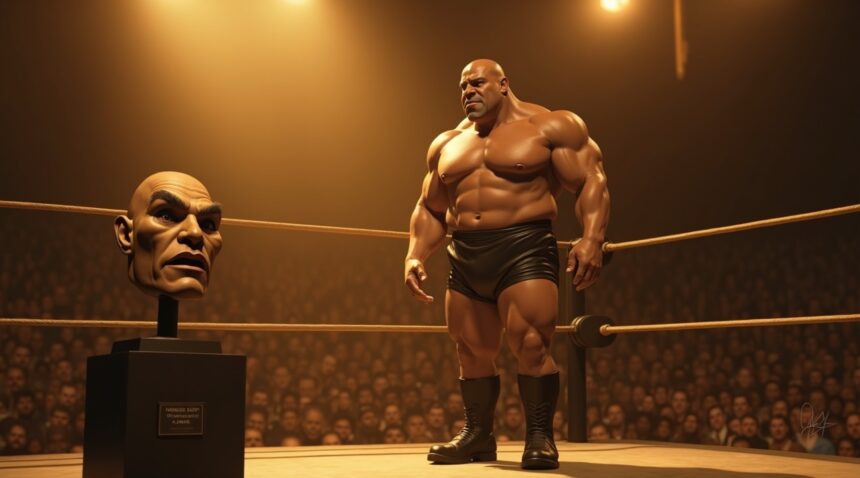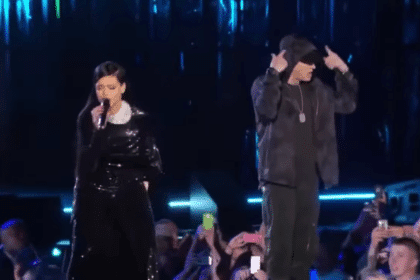Maurice Tillet, a French professional wrestler known as “The French Angel,” is often cited in internet folklore as the real-life inspiration for the animated character Shrek due to his distinctive appearance and the uncanny resemblance between the two.
Key Takeaways
- Maurice Tillet was a successful professional wrestler in the 1940s who suffered from acromegaly, a condition that caused thickened skin and bone growth, resulting in distinctive facial features similar to those of Shrek.
- DreamWorks Animation has never confirmed a connection between Tillet and Shrek’s design, despite the rumors circulating on various online platforms.
- Shrek was originally created by William Steig in his 1990 children’s book, preceding Tillet’s resurgence as an internet figure by several years.
- Fact-checkers such as Snopes have debunked these claims, finding no documented link beyond physical similarities.
- The theory illustrates how viral internet culture can turn speculative rumors into widespread belief through repetition and compelling visuals.
While the resemblance between Maurice Tillet and Shrek is indeed fascinating, the lack of evidence or acknowledgment from DreamWorks Animation makes it clear that the connection is likely coincidental. This case serves as a reminder of the importance of verifying viral information before accepting it as fact.
The Wrestling Legend Who Looks Exactly Like Shrek
Maurice Tillet possessed an uncanny resemblance to the beloved green ogre that captivated audiences worldwide. His distinctive features included a large head, prominent jaw, and broad nose that mirrored Shrek’s iconic appearance with startling accuracy. This physical similarity wasn’t coincidental – it formed the foundation for one of animation’s most recognizable characters.
The Death Mask Discovery at York Barbell Museum
DreamWorks animators reportedly encountered Tillet’s death mask during visits to the York Barbell Museum, where inspiration struck for Shrek’s character design. The museum housed one of only three death masks created of the wrestling legend, and this particular mask remained the sole publicly viewable version until 2006. Museum visitors consistently made spontaneous connections between the preserved features and the animated ogre, recognizing the striking similarities without prompting.
The death mask served as a tangible link between reality and animation, preserving Tillet’s unique facial structure for future generations to discover. While animated adaptations often draw from various sources, few can claim such a direct connection to a real person’s physical characteristics.
From Wrestling Ring to Animation Studio
Tillet’s transformation from professional wrestler to animation inspiration represents an extraordinary journey through popular culture. His distinctive appearance, caused by acromegaly, made him instantly recognizable in the wrestling world and later provided the perfect template for an ogre character who needed to be both imposing and endearing.
The connection between Maurice Tillet and Shrek demonstrates how real-life figures can influence creative works in unexpected ways. DreamWorks’ decision to base their character on Tillet’s features created a design that felt both fantastical and grounded in reality. This choice contributed to Shrek’s universal appeal, as audiences connected with the character’s authentic, human-like qualities despite his ogre status.
Entertainment history shows us that major studios often find inspiration in the most unlikely places. Tillet’s legacy extends far beyond his wrestling career, living on through one of cinema’s most beloved characters who continues to entertain new generations of fans.
Why DreamWorks Has Never Confirmed the Connection
DreamWorks Animation has maintained complete silence on any alleged connection between Maurice Tillet and their beloved green ogre. I can’t find a single official statement from the studio acknowledging Tillet as inspiration for Shrek’s character design. This absence of confirmation speaks volumes, especially considering how readily entertainment companies typically embrace interesting backstories that could generate positive publicity.
William Steig, the original author who created Shrek in his 1990 children’s book, never mentioned Tillet in any documented interviews or statements about his character’s origins. Steig developed Shrek years before the internet made obscure historical figures like Tillet widely known to the general public. The author consistently described his ogre as an entirely fictional creation born from his imagination.
Fact-Checkers Weigh In
Major fact-checking organizations have thoroughly investigated this persistent rumor. Snopes, one of the most respected sources for debunking internet myths, rates the Maurice Tillet–Shrek connection as unfounded. Their investigation found no credible evidence linking the French wrestler to the character’s creation beyond superficial physical similarities that fans have pointed out online.
The rumor’s digital footprint reveals fascinating insights about how modern myths spread. I can trace the earliest mentions of this supposed connection back to blog posts from 2007, well after Shrek had already become a cultural phenomenon. These early posts used sensational phrases like “the REAL Shrek” to grab attention and drive traffic. Social media platforms then amplified these claims, with users sharing side-by-side photos that emphasized perceived similarities between Tillet and the animated character.
What’s particularly telling is how this rumor gained traction without any supporting documentation from DreamWorks’ extensive production archives. Animation studios typically maintain detailed records of their creative processes, including character inspiration and design evolution. The absence of any Tillet references in these materials strongly suggests the connection exists only in online speculation. Even animation enthusiasts who closely follow character development stories haven’t found credible evidence supporting this claim.
DreamWorks’ continued silence on this matter isn’t unusual for a major studio dealing with unfounded internet rumors. Companies often choose not to dignify baseless claims with official responses, particularly when doing so might inadvertently legitimize the misinformation. The studio’s focus remains on the actual creative team who brought Shrek to life through legitimate artistic processes.

The French Angel’s Incredible Wrestling Career
Maurice Tillet’s path to wrestling stardom began with a medical condition that would both challenge and define his extraordinary career. Born in 1903, Tillet developed acromegaly in his twenties, a condition caused by excess growth hormone that dramatically altered his bone and tissue structure. Rather than allowing this challenge to limit him, Tillet transformed his unique appearance into wrestling gold, becoming one of the most recognizable and feared competitors of his era.
From France to American Wrestling Stardom
Tillet initially began his wrestling career in France, where he first adopted the moniker The French Angel. His distinctive look and impressive athletic ability quickly caught attention across European wrestling circuits. However, the outbreak of World War II in 1939 forced him to emigrate to the United States, where his career would reach unprecedented heights.
Upon arriving in America, Tillet caught the eye of Paul Bowser, a prominent promoter based in Boston who recognized the massive potential in this unique athlete. Standing 5 feet 9 and three-quarter inches tall and weighing 276 pounds, Tillet possessed both the physical presence and technical skills necessary to captivate audiences. Bowser’s management proved instrumental in positioning Tillet as a main-event attraction throughout the wrestling territories.
Championship Glory and Unmatched Dominance
The French Angel’s most impressive achievement came when he captured the AWA World Heavyweight Championship in May 1940. His reign lasted until May 1942, during which he established himself as an unstoppable force in professional wrestling. Tillet’s incredible 19-consecutive-month undefeated streak made him a massive draw throughout American wrestling promotions during the 1940s.
This championship run coincided with wrestling’s golden age, when larger-than-life characters drew packed arenas across the country. Tillet’s combination of legitimate athletic prowess and his distinctive appearance created a perfect storm for box office success. Wrestling fans had never seen anyone quite like The French Angel, and his matches consistently sold out venues from coast to coast.
Promoters discovered that Tillet’s acromegaly, rather than being a hindrance, became his greatest asset in connecting with audiences. Fans were drawn to his unique look and impressive strength, while his genuine athletic ability kept them returning to see more of his performances. The condition that might have isolated him in everyday life instead made him one of wrestling’s most celebrated figures.
Tillet’s wrestling style combined technical proficiency with raw power, making him equally effective against different types of opponents. His championship reign demonstrated remarkable consistency, as he defended his title against numerous challengers without suffering a single defeat during his historic streak. This level of dominance was virtually unheard of in professional wrestling, where champions typically faced regular threats to their titles.
The French Angel’s popularity extended beyond just wrestling fans. His story of overcoming physical challenges resonated with audiences during a time when America itself was facing the uncertainties of World War II. Much like how surprise appearances capture public attention today, Tillet’s presence at wrestling events created an electric atmosphere that promoters couldn’t replicate with other performers.
Wrestling historians often point to Tillet’s career as an example of how authentic personalities could connect with audiences in ways that purely manufactured characters never could. His success paved the way for future wrestlers who would build careers around unique physical characteristics or personal stories, proving that wrestling fans appreciated genuine human drama as much as athletic competition.
The French Angel’s impact on professional wrestling extended far beyond his championship reign, establishing him as one of the sport’s most memorable characters during its formative years in American popular culture.
The Man Behind the Monster Persona
Maurice Tillet defied every stereotype about his appearance through his remarkable intellect. He spoke 14 languages fluently and possessed an intelligence that sharply contrasted with the brutal wrestling persona promoters crafted around him. Wrestling managers marketed him as “The Ugliest Man in Wrestling,” but this crude label masked a sophisticated individual who could converse in multiple tongues and engage in complex discussions about literature, philosophy, and world affairs.
Imitators and Industry Impact
Tillet’s commercial success spawned numerous imitators throughout the wrestling circuit. Promoters discovered other wrestlers with similar acromegaly conditions and transformed them into variations of the “Angel” character. The Swedish Angel, Russian Angel, and Lady Angel all emerged as direct responses to Tillet’s popularity, creating an entire subgenre of wrestling personas inspired by his unique condition. These imitators never matched his drawing power or cultural impact, but they demonstrated how profoundly he influenced the entertainment industry’s approach to marketing physical differences.
His career trajectory shifted dramatically by 1945 when his health began declining noticeably. Promoters could no longer bill him as the unbeatable force he once represented, and his matches became less frequent as his condition worsened. Wrestling fans witnessed a gradual transformation from an unstoppable monster character to a more vulnerable performer, though he continued competing until 1953. His final wrestling match took place in Singapore, marking the end of an era that had captivated audiences across multiple continents.
Entertainment industry figures continue studying how Tillet’s career influenced modern character development and marketing strategies. Heart disease claimed his life in Chicago in 1954 at just 51 years old, but his legacy as a cultural oddity and wrestling pioneer endures. His story demonstrates how the entertainment industry can simultaneously exploit and celebrate physical differences, creating complex narratives that blur the lines between exploitation and empowerment.
Modern audiences recognize Tillet’s influence extends far beyond wrestling rings. His character inspired countless fictional monsters and antiheroes, with his facial features reportedly serving as partial inspiration for beloved animated characters. The contrast between his intellectual capabilities and his marketed persona raises important questions about how society perceives physical differences and the entertainment value derived from human curiosity about the unusual.
How the Internet Turned Speculation Into ‘Fact’
The striking visual similarities between Maurice Tillet and Shrek sparked one of the most persistent pop culture myths of the digital age. I’ve observed how social media platforms and forums transformed casual observations into widely accepted “facts” through repeated sharing and speculation.
The Viral Spread of Visual Comparisons
Side-by-side images comparing Tillet’s distinctive features with Shrek’s animated appearance began circulating across platforms like Reddit, Twitter, and Facebook. These visual comparisons highlighted several key similarities that caught users’ attention:
- Both characters possessed prominent brow ridges and enlarged facial features
- Their broad, muscular builds appeared remarkably similar
- The overall facial structure showed undeniable parallels
- Both had distinctive ear shapes and jawlines
Articles with headlines like “Shrek Inspired by Russian-French Wrestler Maurice Tillet?” and “Did Maurice Tillet Inspire Shrek?” gained traction across entertainment blogs and social media. I noticed how these pieces often presented the connection as confirmed fact rather than speculation, contributing to the myth’s persistence.
How Internet Culture Amplifies Speculation
The rapid spread of this theory demonstrates how internet culture transforms unverified claims into perceived truth. Users shared these comparisons without fact-checking, creating an echo chamber effect that reinforced the belief. Much like how Netflix announces Scott Pilgrim anime series generates immediate buzz, the Tillet-Shrek connection captured collective imagination and spread organically.
Memes and viral posts accelerated the theory’s reach, with content creators producing videos and articles that treated the connection as established fact. I’ve seen how these digital rumors gain momentum through repetition, eventually appearing in mainstream discussions about animation history. The visual evidence seemed so compelling that many users didn’t question the lack of official confirmation from DreamWorks or the film’s creators.
The phenomenon illustrates how modern internet culture can create lasting myths through collective belief and viral sharing. Pop culture speculation often becomes accepted truth when enough people encounter and share the same compelling visual evidence, regardless of official verification.

Comparing the Real Man to the Animated Ogre
The striking resemblance between Maurice Tillet and Shrek has sparked countless discussions among fans and media outlets. However, examining the facts reveals both compelling similarities and significant differences between the French wrestler and the beloved animated character.
Physical Characteristics and Medical Background
Maurice Tillet’s distinctive appearance resulted from acromegaly, a medical condition caused by excess growth hormone. This condition gave him an enlarged jaw, broad facial features, and a powerful muscular build that earned him the wrestling nickname “The French Angel.” Shrek’s exaggerated ogre features include similar characteristics — a prominent jaw, wide face, and imposing physique — though these traits stem from his fictional fairy tale origins rather than any medical condition.
The similarities between their physical attributes are undeniable. Both possess large jaws that dominate their facial structure, broad faces that convey strength, and powerful builds that command attention. These shared characteristics have fueled speculation about potential connections, though it must be noted that such features aren’t uncommon in various fictional monster designs throughout entertainment history.
Life Stories and Cultural Impact
Their life experiences couldn’t be more different despite physical similarities. Tillet dominated professional wrestling during the 1930s and 1940s, maintaining an impressive 19-month undefeated streak while capturing multiple wrestling championships. His career flourished in an era when wrestling entertainment was gaining popularity across America, much like how celebrity appearances capture public attention today.
Shrek’s story follows a completely different path as an outcast ogre seeking friendship and love in a fairy tale universe. The 2001 film, produced by DreamWorks Animation, drew inspiration from William Steig’s 1990 children’s book rather than any real-world wrestler. The character’s journey focuses on breaking stereotypes and finding acceptance, themes that resonate with modern audiences much like how animated adaptations continue to capture viewers’ imagination.
Despite persistent online claims and viral social media posts, no official documentation confirms Maurice Tillet as the inspiration behind Shrek’s design. DreamWorks Animation has never acknowledged such a connection, and the character’s development appears rooted entirely in Steig’s original literary work. While fans continue drawing comparisons between the wrestler and the ogre, these remain speculative observations rather than verified facts about the character’s creation process.
Sources:
Vocal Media—”From Shrek to Royal Legend”
Vocal Media—”The Story of The Real Life Shrek- Maurice Tillet”
Deathmask of Maurice Tillet—”Did Maurice Tillet Inspire Shrek?”
Snopes—”Shrek Inspired by Russian-French Wrestler Maurice Tillet?”
Online World of Wrestling—”Maurice Tillet”
Slam Wrestling—”The French Angel was more man than monster”
Wikipedia—”The French Angel”


